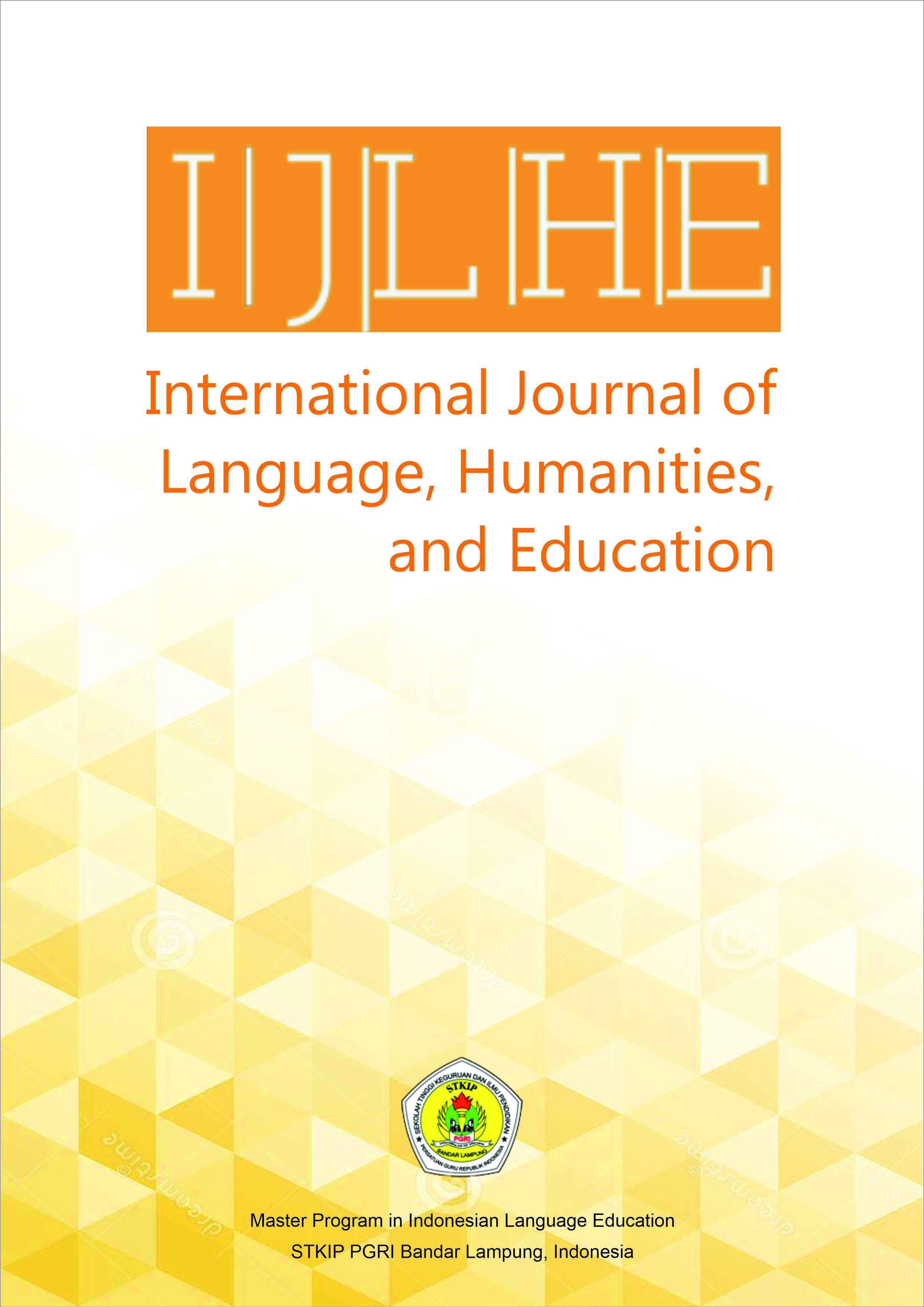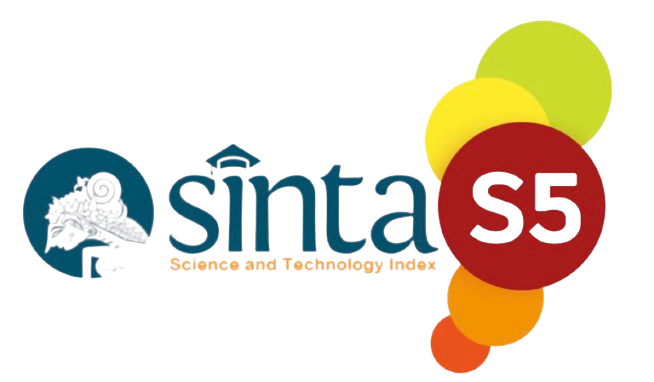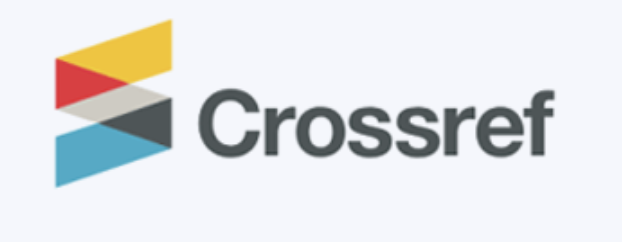Students’ Perspectives on the Use of Padlet Wall in Writing Classes
DOI:
https://doi.org/10.52217/ijlhe.v7i2.1593Keywords:
EFL, Padlet Wall, students’ perspective, writing skillAbstract
Writing is the process of generating ideas and expressing them through statements and paragraphs to communicate indirectly with others. It involves articulating thoughts using written language. Writing skills are a critical component of English language proficiency. These skills enable individuals to convey their thoughts meaningfully and interact effectively through written messages. During the pandemic, online learning created opportunities to integrate digital media into teaching, including writing classes. One such tool is the Padlet Wall, a virtual bulletin board that allows lecturers and students to post notes, links, videos, images, and document files. This research aims to explore students’ perspectives on the use of Padlet Wall in writing classes during online learning. The participants of this study were fifth-semester students, and data collection was conducted using a questionnaire. The research employed a survey method to gather insights into whether students appreciated or disliked using Padlet Wall for writing classes. The findings reveal students’ attitudes toward the use of this digital tool in their learning process.
References
Alsa, A. (2004). Pendekatan kualitatif dan kuantitatif serta kombinasinya dalam penelitian psikologi. Pustaka Pelajar.
Ameri, L. (2008). Writing letters for all. Khawar Book Co.
Andewi, W., & Hastomo, T. (2022). Effect of using flipped classroom for teaching writing based on students’ motivation: A quasi-experimental research. Premise: Journal of English Education and Applied Linguistics, 11(3), 615–631. https://doi.org/10.24127/pj.v11i3.5511
Boardman, A. C. (2008). Writing to communicate 1. Pearson Education.
Boardman, A. C., & Frydenberg, J. (2008). Writing to communicate 2. Pearson Education.
Cole, A. W., Lennon, L., & Weber, N. L. (2019). Student perceptions of online active learning practices and online learning climate predict online course engagement. Interactive Learning Environments, 1–15.
Delacruz, E., Brock, D., Fuglestad, T., Ferrell, K., Huffer, J., & Melvin, S. (2014). Teaching art in the age of social media: Firsthand accounts of five technology-savvy art teachers.
DeWitt, D., Alias, N., & Siraj, S. (2015). Collaborative learning: Interactive debates using Padlet in a higher education institution. International Educational Technology Conference (IETC 2015), Istanbul, Turkey.
Hastomo, T. (2019). Schoology effects on students’ writing ability. Lentera: Jurnal Ilmiah Kependidikan, 12(1), 149–154.
Hastomo, T. (2021). Video conferences in teaching EFL: A case study of using Zoom. Lentera: Jurnal Ilmiah Kependidikan, 14(1), 125–132. https://doi.org/10.52217/lentera.v14i1.830
Hastomo, T., & Zulianti, H. (2022). The integration of the KWL (Know, Want, Learn) strategy and the Zoom conference in teaching reading: An action research. Linguists: Journal of Linguistics and Language Teaching, 8(1), 55–66. https://doi.org/10.29300/ling.v8i1.6574
Hastomo, T., Mandasari, B., & Widiati, U. (2024). Scrutinizing Indonesian pre-service teachers’ technological knowledge in utilizing AI-powered tools. Journal of Education and Learning (EduLearn, 18(4), 1572–1581. https://doi.org/10.11591/edulearn.v18i4.21644
Kosha, J., et al. (2021). Content-specific differences in Padlet perception for collaborative learning amongst undergraduate students. Research in Learning Technology, 29, 1–3.
Norziha, et al. (2020). Enhancing classroom engagement through Padlet as a learning tool: A case study. International Journal of Innovative Computing, 10(1), 49–57.
O’Donnell, D. T., & Paiva, J. L. (1993). Independent writing. Heinle & Heinle Publishers.
Oktarin, I. B., Saputri, M. E. E., Magdalena, B., Hastomo, T., & Maximilian, A. (2024). Leveraging ChatGPT to enhance students’ writing skills, engagement, and feedback literacy. Edelweiss Applied Science and Technology, 8(4), 2306–2319. https://doi.org/10.55214/25768484.v8i4.1600
Omid, et al. (2020). The importance of paragraph writing: An introduction. International Journal of Latest Research in Humanities and Social Science (IJLRHSS), 3(7), 44–50.
Pritantina, et al. (2018). PADLET as a medium to improve writing mastery of English department students of UNISKA 2015–2016. Advances in Social Science, Education and Humanities Research, 145, 184–185.
Rashid, A. (2015). Enhancing class activities using Padlet: A teacher’s reflection.
Rashid, A. A., Yunus, M. M., & Wahi, W. (2019). Using Padlet for collaborative writing among ESL learners. Creative Education, 10(3), 610–620.
Sari, C. M., Zulianti, H., & Hastomo, T. (2023). Enhancing students’ writing ability using clustering methodology. Aksara: Jurnal Bahasa dan Sastra, 24(2), 600–610. https://doi.org/10.23960/aksara.v24i2.pp600-610
Sugiyono. (2018). Metode penelitian kuantitatif, kualitatif, dan R&D. Alfabeta.
Sutiyono, A., & Hastomo, T. (2022). Zoom conference: A study of students’ perception on academic achievement during the COVID-19 pandemic. English Education: Jurnal Tadris Bahasa Inggris, 15(2), 193–205. https://doi.org/10.24042/ee-jtbi.v15i2.13539
Taylor, S., & Todd, P. A. (1995). Understanding information technology usage: A test of competing models. Information Systems Research, 6(2), 144–176.
Venkatesh, V. (2000). Determinants of perceived ease of use: Integrating control, intrinsic motivation, and emotion into the technology acceptance model. Information Systems Research, 11(4), 342–365.
Venkatesh, V., & Davis, F. D. (2000). A theoretical extension of the technology acceptance model: Four longitudinal field studies. Management Science, 46(2), 186–204.
Waziana, W., Andewi, W., Hastomo, T., & Hasbi, M. (2024). Students’ perceptions about the impact of AI chatbots on their vocabulary and grammar in EFL writing. Register Journal, 17(2), 328–362. https://doi.org/10.18326/register.v17i2.352-382
Yulistiani, E., Supriyono, S., Wicaksono, A., & Hastomo, T. (2020). The correlation between vocabulary mastery, reading habits, and the students’ writing ability. IJLHE: International Journal of Language, Humanities, and Education, 3(1), 69–76.
Zhi, Q., & Su, M. (2015). Enhance collaborative learning by visualizing the process of knowledge building with Padlet. In International Conference of Educational Innovation through Technology (EITT), Wuhan, China. IEEE. https://doi.org/10.1109/EITT.2015.54














